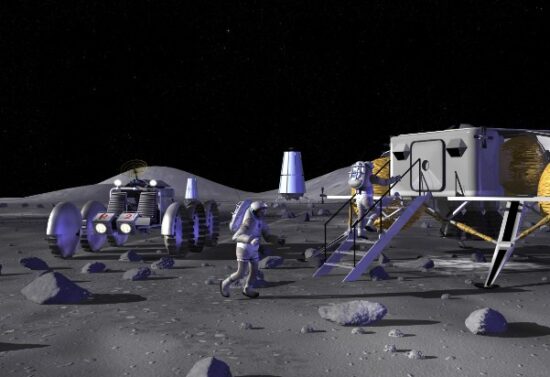The U.S. has plans to return to the moon by the middle of this decade through NASA’s Artemis Program. But going back to the lunar surface and cislunar space isn’t just about putting boots on the ground. That’s why the White House Office of Science and Technology Policy on behalf of the Cislunar Science and Technology Subcommittee of the National Science and Technology Council has issued a request for ideas (RFI) with a deadline of Wednesday, July 20, 2022, for interested parties to make submissions.
The U.S. government has defined cislunar space as the entire region beyond Earth’s geostationary orbit subject to the gravity of both our planet and the Moon. The RFI covers both orbiting and lunar surface activities.
The government is seeking help in creating research priorities, technical standards and the development of a sustainable presence for human activity in cislunar space.
The RFI requests answers to two questions:
- What research and development should the U.S. government prioritize to help advance a robust, cooperative, and sustainable ecosystem in cislunar space in the next 10 years? And over the next 50 years?
- What key technical standards are most useful to develop in support of activities in cislunar space, and how could these standards enable and support a vibrant and sustainable cislunar ecosystem?
The U.S. government notes in its RFI request that any information obtained can be used by the government without attribution, and may become the basis for future cislunar plans. So you can give them all of your ideas and not necessarily get any subsequent commitment to fund them with you on the receiving end of that money.
With the success of the Apollo Moon landings beginning in 1969 and extending to 1972, the Cold War space race came to an end and the driving force of ideological competition stopped. The Apollo astronauts wanted to continue returning to the lunar surface but U.S. government priorities steered NASA into low-Earth orbit activities and the Shuttle Program in addition to the agency’s science missions.
Many at NASA expected that by 2022 there would be boots on the ground on Mars, and that a permanent inhabited lunar base would be already in place. More than fifty years later the dream is being revived.
Artemis intends to not just land humans on the Moon but establish a long-term presence. But why revisit that desolate terrain? After all, going there is dangerous business. Apollo 13 showed us just how fragile the Apollo Program was. A lack of adequate space infrastructure almost led to a catastrophe. And building and testing Apollo led to the tragic death of three of NASA’s astronauts.
So what will these RFI responses say? Here are 10 likely themes that the U.S. White House Office of Science and Technology Policy will receive:
- The lunar surface can be exploited for its material resources that can both sustain a permanent human presence there as well as provide valuable materials for Earth.
- Working in the low-gravity lunar and micro-gravity cislunar vacuum will yield manufacturing and material breakthroughs.
- Exploiting the low and micro-gravity environments of the Moon and cislunar space will yield medical and human health breakthroughs.
- Studying the lunar surface will give us a better understanding of Earth’s history.
- The side of the Moon that permanently faces away from the Earth represents an incredible location for radio astronomy with no signal interference from our planet.
- The Moon and cislunar space are better places for us to find and observe near-Earth asteroids that could conceivably present a future threat to the planet.
- Developing cislunar infrastructure at Lagrange points will be an opportunity to develop permanent outposts for human habitation independent of Earth or the Moon.
- Earth satellite networks, particularly those in geosynchronous orbit would be cheaper to manage and support from cislunar space and the Moon.
- The return to the Moon will be a foundation and test bed for future missions to Mars, the asteroids and other destinations in the Solar System.
- And if Elon Musk and SpaceX respond to the RFI, no doubt that RFI submission will state that our permanent presence on the Moon and in cislunar space will ensure humanity can become an interplanetary species.








